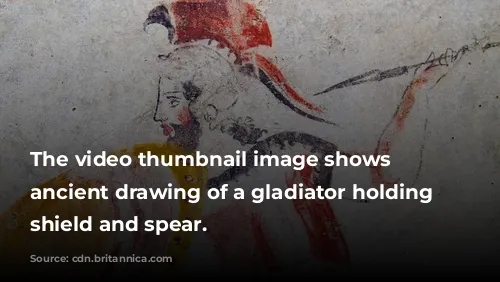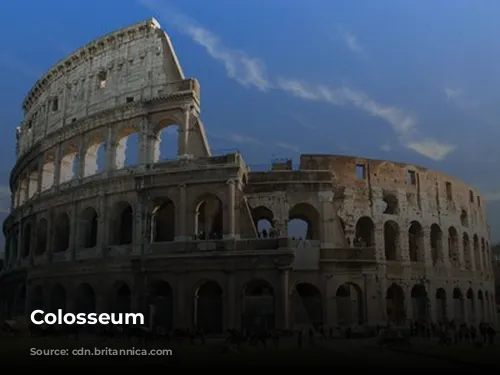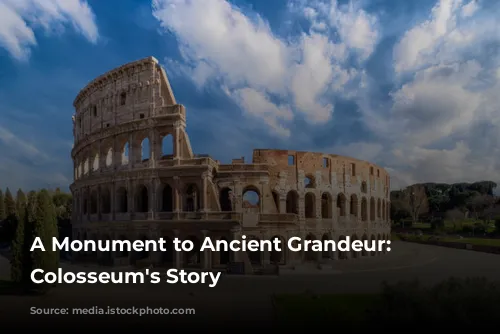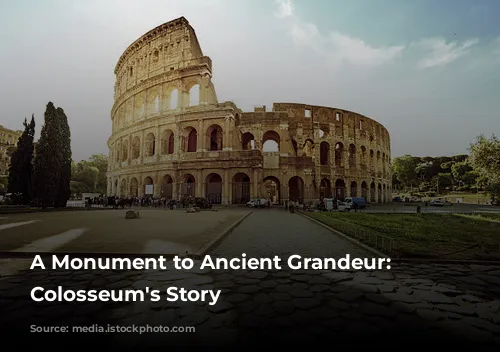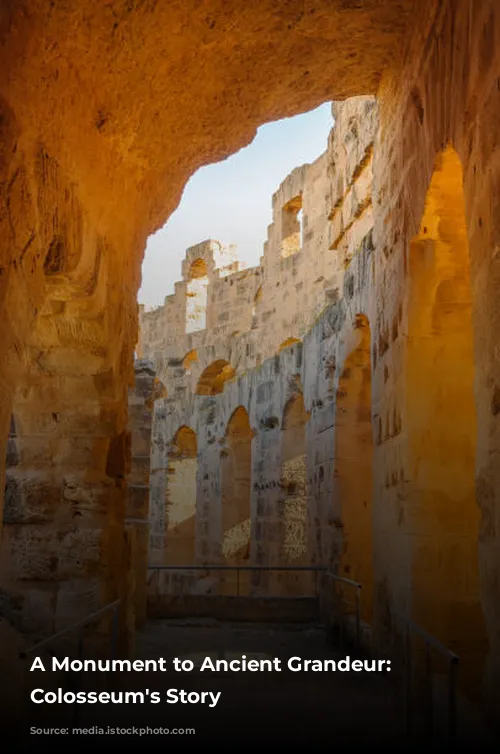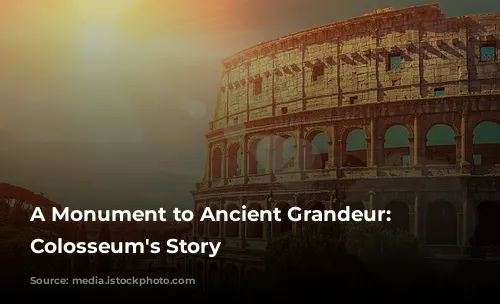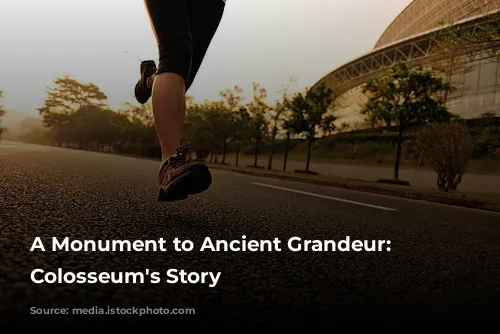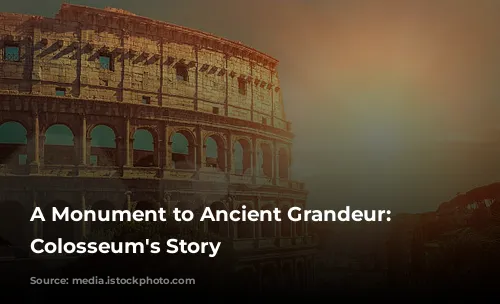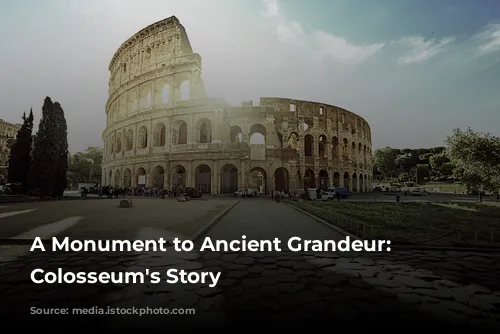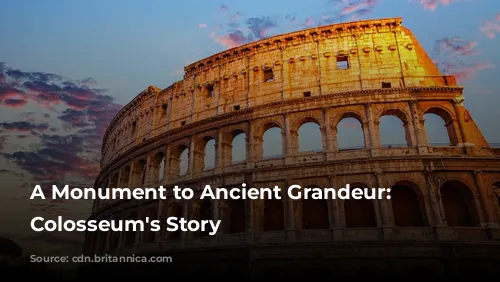The Colosseum, a majestic symbol of ancient Rome’s architectural and engineering brilliance, stands tall as a testament to a bygone era. Its imposing presence attracts millions of visitors each year, making it a significant contributor to Italy’s tourism revenue. In 2018 alone, the Colosseum, Roman Forum, and Palatine Hill collectively generated over $63.3 million (€53.8 million), solidifying their position as the country’s top tourist attraction.
A Legacy of Resilience: From Glory to Ruin and Restoration
The Colosseum’s journey is a story of both grandeur and adversity. After the fall of the Western Roman Empire, the once-thriving arena fell into disrepair. The Frangipane and Annibaldi families repurposed it as their fortress in the 12th century. The Colosseum’s fate took a further turn in the late 15th century when Pope Alexander VI granted permission for it to be used as a quarry. The arena, once a symbol of Roman might, became a source of building materials.
After enduring over a thousand years of neglect, the Colosseum finally received the attention it deserved. In the 1990s, state-funded restoration efforts began, breathing life back into this iconic structure.
Born from Triumph and Conflict: The Colosseum’s Origins
The Colosseum’s construction was a symbol of Rome’s resurgence after the tumultuous year of the four emperors (69 CE). Emperor Vespasian, keen to revitalize the city, envisioned the Colosseum as a grand entertainment venue. Inspired by other amphitheatres, Vespasian intended the Colosseum to host a variety of spectacles, including thrilling gladiator battles, exciting animal hunts, and even mock naval battles.
Construction commenced under Emperor Vespasian between 70 and 72 CE. The finished arena, dedicated in 80 CE by Vespasian’s son and successor, Titus, became a source of pride for the Roman Empire. The Colosseum’s fourth story was added in 82 CE by Emperor Domitian. It’s important to note that the Colosseum’s funding came from the spoils of war, specifically the plunder from Titus’s conquest of Jerusalem in 70 CE. Furthermore, the construction was carried out by enslaved Jewish people from Judaea.
A Monument to Engineering: Design and Construction
The Colosseum, also known as the Flavian Amphitheatre, is an elliptical marvel built under the rule of the Flavian emperors. This magnificent structure, standing four stories tall at its highest point, is a blend of stone, concrete, and tuff. Measuring an impressive 620 by 513 feet (189 by 156 meters), the Colosseum had the capacity to accommodate a staggering 50,000 spectators. This colossal arena, renowned for its gladiatorial combats, stands as a testament to the Roman Empire’s architectural prowess.
The Colosseum, situated just east of the Palatine Hill on the grounds of Nero’s Golden House, was a symbolic replacement for the tyrannical emperor’s private lake. Vespasian, who rose to power from humble beginnings, chose to transform the private lake into a public amphitheater, a space where tens of thousands of Romans could gather for entertainment.
Unlike earlier amphitheatres, which were typically built into hillsides for added support, the Colosseum was a freestanding structure. A complex system of barrel and groin vaults, a remarkable feat of engineering, supported the arena’s structure. The Colosseum’s exterior featured three levels of arcades, framed by engaged columns in the Doric, Ionic, and Corinthian orders. This arrangement of columns, known as the assemblage of orders, became a defining element of Renaissance architecture. Travertine formed the primary structural framework and facade, while volcanic tufa served as secondary walls. Concrete was used for the inner bowl and the arcade vaults.
A Colossal Spectacle: Entertainment and Audience
The Colosseum provided a stage for a variety of captivating spectacles. Its massive retractable awning, known as a velarium, shielded spectators from the scorching sun. The velarium was manipulated by hundreds of Roman sailors using rigging attached to masts extending from corbels built into the Colosseum’s attic story. The arena hosted countless gladiatorial combats, contests between men and animals, and even elaborate mock naval battles.
However, the Colosseum’s role in the martyrdom of early Christians remains a subject of debate. While it is generally accepted that Christians were persecuted in the Roman Empire, there is no definitive evidence that the Colosseum served as a site for their execution.
Through Time: The Colosseum’s Transformation
During the Middle Ages, the Colosseum was repurposed as a church and later as a fortress by two prominent Roman families, the Frangipane and the Annibaldi. Over the centuries, the arena faced numerous challenges, including damage from lightning strikes, earthquakes, vandalism, and pollution. The once-ornate marble seats and decorative elements vanished, as the site was treated as a quarry for over a millennium.
The Colosseum’s preservation efforts gained momentum in the 19th century. Notable contributions came from Pius VIII, who led a campaign to protect this historical monument. The 1990s saw a major restoration project, returning the Colosseum to its former glory.
Today, the Colosseum remains one of Rome’s most beloved tourist attractions, drawing nearly seven million visitors annually. It serves as a window into the grandeur of ancient Rome, offering visitors a glimpse into the city’s rich history and culture. Regularly changing exhibitions, exploring the world of ancient Rome, enhance the visitor experience, bringing the past to life for a modern audience.
The Colosseum, standing as a testament to Roman ingenuity and resilience, continues to inspire awe and wonder in its visitors. This majestic amphitheater, a symbol of ancient Rome’s enduring legacy, remains a source of fascination and a must-see destination for travelers from around the globe.
